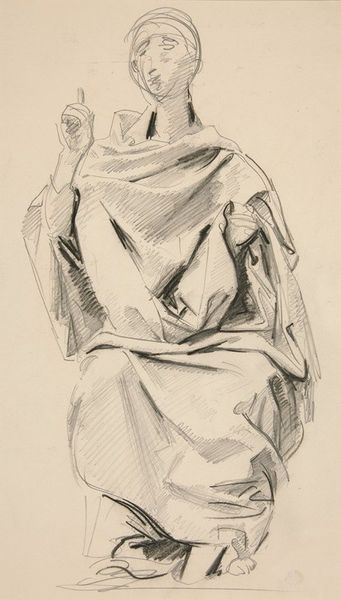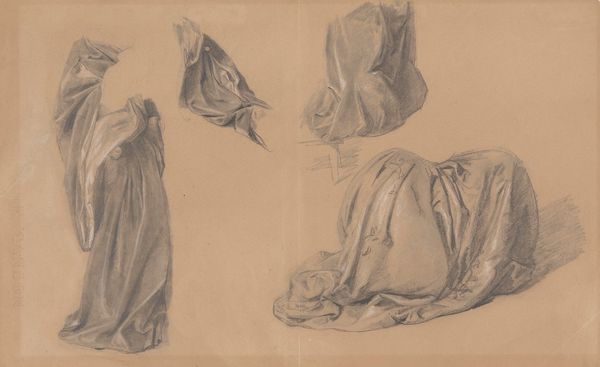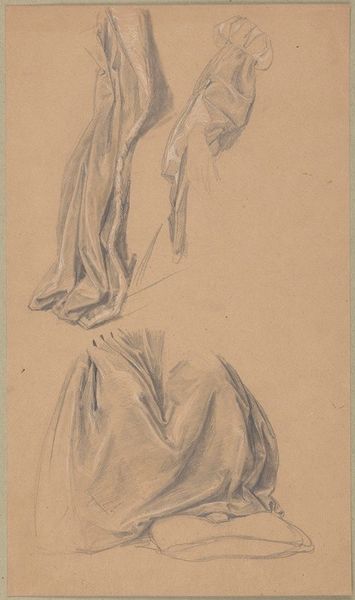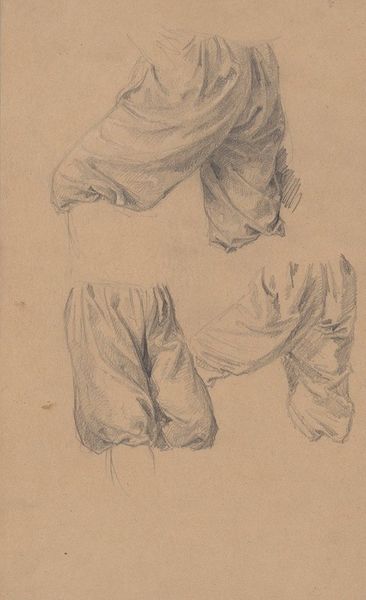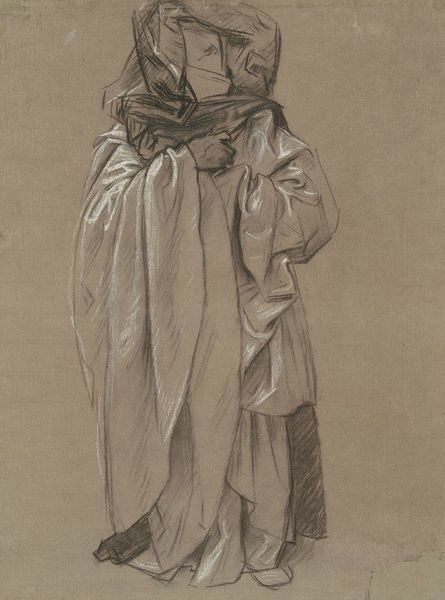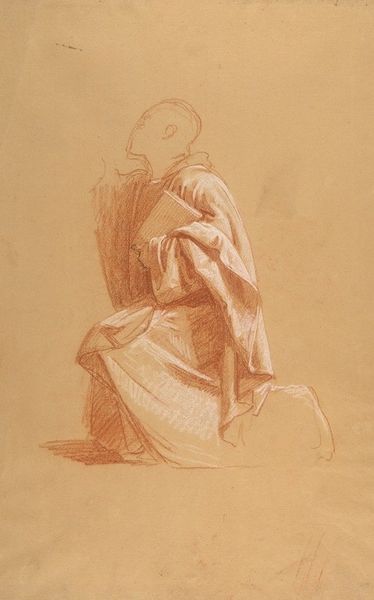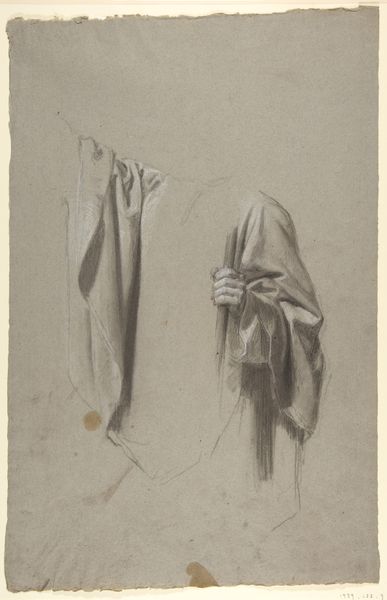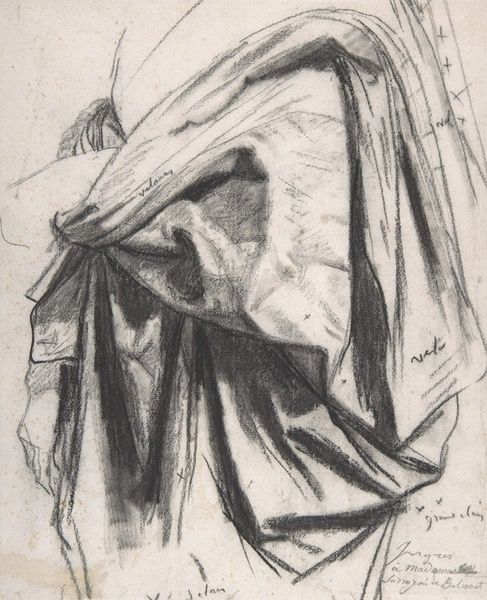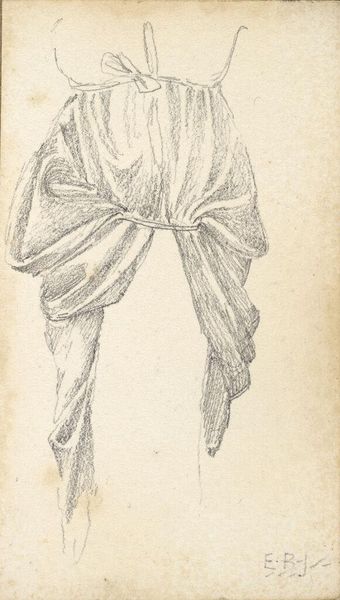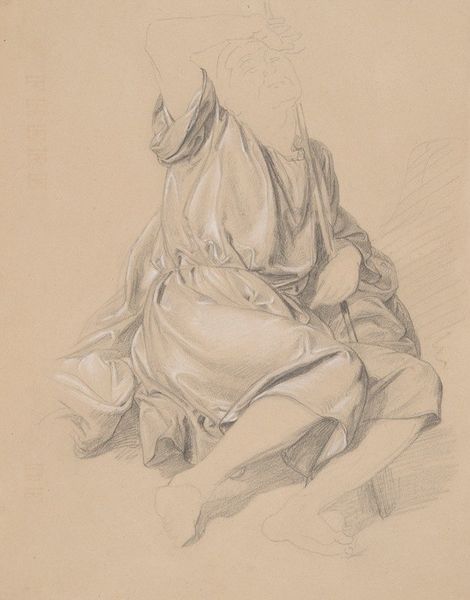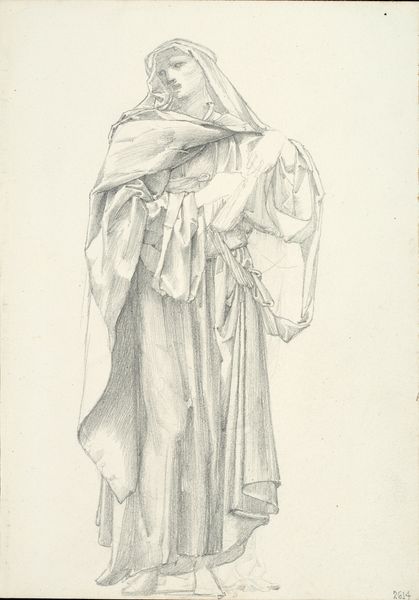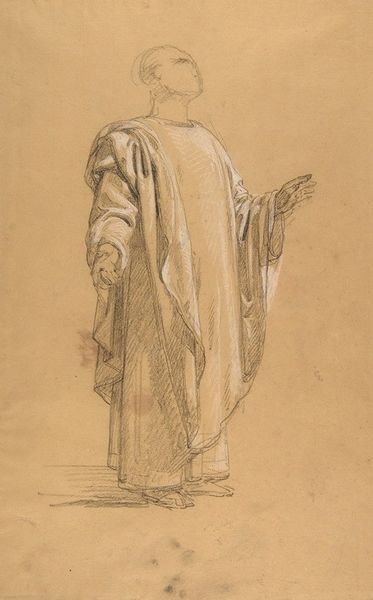
Three studies of dress drapery for the painting ‘The Upbringing of Sigismund Augustus’ 1861
0:00
0:00
drawing, paper, pencil
#
pencil drawn
#
drawing
#
pencil sketch
#
charcoal drawing
#
paper
#
pencil drawing
#
pencil
#
academic-art
Copyright: Public Domain: Artvee
Curator: This pencil drawing from 1861 presents a study of dress drapery by Józef Simmler. It served as a preparatory work for his painting ‘The Upbringing of Sigismund Augustus.’ What are your initial thoughts on this drawing? Editor: Immediately, I'm struck by the almost ghostly presence of the draped forms. The upper one, especially, looks like a shrouded figure, despite it merely being a study of fabric. Curator: Precisely. Simmler, deeply embedded in the academic art scene of 19th century Poland, would have approached such drapery studies with immense seriousness. These were fundamental to history painting, dictating how power and status were communicated. The clothing signified the wearer's position in society. Editor: It makes me wonder about the social life of cloth itself. Look at the textures here, particularly in the lower right study. One can imagine the work involved in creating the fabric, the labor and the skill that went into weaving that pattern. The final image represses that context. Curator: Absolutely, the consumption of textiles was deeply political. Note how Simmler uses light and shadow to sculpt these forms. Drapery became almost sculptural, bearing meaning far beyond its utilitarian function. These preparatory sketches were crucial to achieving the right visual impact, emphasizing the historical gravitas Simmler sought for his grand paintings. Editor: The act of meticulously drawing each fold is in itself a labour-intensive process, mirroring the labour embedded in the fabrics themselves. How might this painstaking representation contribute to our understanding of social structures conveyed by this finished art work, what power structure does it reinforce? Curator: Considering the finished painting depicts the upbringing of a Polish king, Simmler’s acute attention to detail amplified the royal presence. The folds and textures signal luxury, power, and the historical weight of Sigismund Augustus' reign, thereby legitimizing his historical narrative and potentially certain politics bound up with that period of rule. Editor: And perhaps it serves a purpose to see this raw preparatory piece as an insight, maybe not just of artistic work but of the economic production processes and its values that are so deeply interlinked with political and social order. Curator: Indeed, by meticulously crafting every detail of dress, artists like Simmler helped construct the visual language of historical power. This careful process reflects a whole historical and social dynamic that comes with this fabric as commodity. Editor: Thank you for revealing those dimensions. Curator: It has been a pleasure teasing out some material truths here today.
Comments
No comments
Be the first to comment and join the conversation on the ultimate creative platform.
